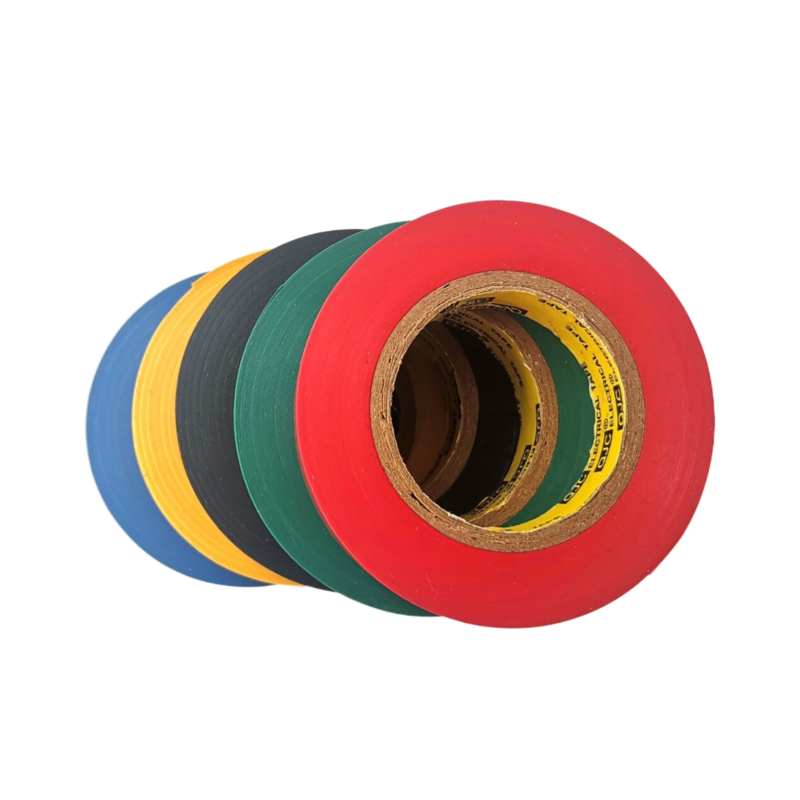The Versatility of Butyl Rubber Tape
Butyl rubber tape, a vital tool in construction, automotive, and various industrial applications, has gained significant popularity due to its unique properties and versatility. Made primarily from butyl rubber, a synthetic polymer known for its excellent sealing and insulating characteristics, this tape serves numerous functions that simply cannot be matched by other adhesive materials.
What is Butyl Rubber?
Butyl rubber is a synthetic rubber that is known for its low permeability to gases and moisture. It exhibits excellent weather-resistant properties and is chemically stable under a variety of conditions. Butyl rubber was first developed in the early 20th century and has since evolved into a material that provides superior performance in many applications. This rubber variant is non-toxic, flexible, and can withstand extreme temperatures, further enhancing its utility.
Characteristics of Butyl Rubber Tape
1. Adhesion One of the most significant attributes of butyl rubber tape is its high adhesive strength. It sticks strongly to various surfaces, including metal, wood, plastic, and glass, making it an excellent choice for sealing and bonding. Once applied, it forms a robust bond that can endure stress and environmental changes.
2. Waterproof and Moisture Resistant Butyl rubber tape provides a waterproof seal, making it ideal for applications where exposure to water or moisture is a concern. Whether in roofing, plumbing, or automotive industries, this tape effectively prevents leaks and moisture infiltration.
3. Temperature Resistance This tape is designed to function efficiently in a broad temperature range. Butyl rubber retains its elasticity and adhesion properties even in extreme temperatures, making it suitable for both hot and cold environments.
4. Durability The weather-resistant quality of butyl rubber ensures that the tape remains effective even when exposed to harsh environmental conditions, including UV rays, ozone, and various chemicals. This durability translates into a longer lifespan, reducing the need for frequent repairs or replacements.
butyl rubber tape

5. Flexibility Butyl rubber tape is inherently flexible, allowing it to conform to various shapes and surfaces. This property is particularly advantageous in applications that require a tight seal around irregular surfaces, such as in roofing repairs and automotive sealing jobs.
Applications of Butyl Rubber Tape
1. Roofing One of the most common uses of butyl rubber tape is in roofing applications. It is used to seal joints, seams, and surfaces to prevent water damage. Its ability to provide a waterproof barrier makes it a critical material in roof repairs and installations.
2. Automotive Industry Butyl rubber tape is extensively utilized in the automotive sector for sealing windshields, windows, and body panels. Its strength and resistance to weathering ensure that vehicles remain leak-proof and structurally sound.
3. HVAC Systems In heating, ventilation, and air conditioning (HVAC) systems, butyl rubber tape is used to seal ductwork joints and ensure energy efficiency. It helps in preventing air leaks, which can lead to higher energy costs and reduced system performance.
4. Construction and General Repairs Butyl rubber tape serves various purposes in construction, including sealing gaps in structures, insulation services, and general repairs. Its versatility allows it to be used in DIY projects around the home as well.
Conclusion
In conclusion, butyl rubber tape stands out as a multifunctional adhesive solution that meets the demands of various industries. With its remarkable adhesion, moisture resistance, durability, and flexibility, it remains a top choice for professionals and DIY enthusiasts alike. As we continue to seek sustainable and efficient materials for everyday challenges, butyl rubber tape represents an innovative and practical option that delivers exceptional performance across a multitude of applications. From roofing to automotive sealing, it proves that sometimes, the simplest tools can make the most significant impact.
-
XIANGFAN Rubber Tape-Ultimate Solutions for All Your Insulation NeedsNewsJun.24,2025
-
XIANGFAN Rubber Tape-Protection for Industrial and Residential ApplicationsNewsJun.24,2025
-
XIANGFAN Rubber Tape: Superior Safety and Sealing for Demanding EnvironmentsNewsJun.24,2025
-
XIANGFAN Rubber Tape: Reliable Solutions for Every Electrical ChallengeNewsJun.24,2025
-
XIANGFAN Electrical & Industrial Tape: Powering Reliability Across IndustriesNewsJun.24,2025
-
XIANGFAN Electrical & Industrial Tape: Excellence in Every ApplicationNewsJun.24,2025
